COSTA RICA
History

History

Cities in COSTA RICA
| San jose |
History
Pre-Columbian Period
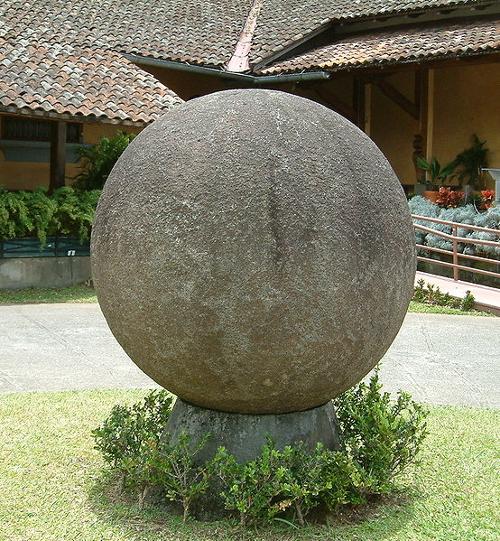 Stone sphere from Pre-Columbian Costa RicaPhoto: WAvegetarian at the English language Wikipedia CC 3.0 no changes made
Stone sphere from Pre-Columbian Costa RicaPhoto: WAvegetarian at the English language Wikipedia CC 3.0 no changes made
The first humans reached the Americas from Asia 40,000 to 50,000 years ago. Both continents were still connected at that time.
The oldest stone utensils and food remains found in Costa Rica date from around 12,000 BC. Mammoth teeth have also been found, indicating that they were hunters who lived a nomadic existence.
Unlike many other countries in Central America and South America, Costa Rica has almost no major structures and a considerable degree of civilization dates back to about 3,000 BC. The territory of Costa Rica can therefore be considered as a transition area between Central and South America and the peoples living here are clearly influenced by both civilization areas.
Around this time, Circumcaribes from northern South America and Chibcha (northern Andean region) settled on the Caribbean coast, in the south and on the central plateau of Costa Rica. The main peoples that developed after this were the Huetar and the Boruca. Goldsmithing was established in about AD 500. introduced in Costa Rica.
About 800 AD. a population movement towards Costa Rica started from Mexico. As a result, the peoples originally from South America were expelled from northwestern Costa Rica or more or less forced to assimilate with the new occupiers. Until colonial times, the Chorotega was the most important civilization in this part of Costa Rica.
Spanish rule
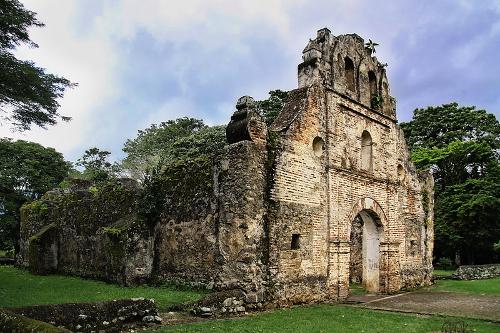 16th century church, Costa RicaPhoto: Edwin Dalorzo in the public domain
16th century church, Costa RicaPhoto: Edwin Dalorzo in the public domain
During the fourth and last voyage (1502-1504) of the explorer Christopher Columbus, he arrived at the rocky island of La Isla Uvita, located in front of the current city of Puerto Limón. The coastal area was called "costa rica", the "rich coast". However, many valuables were not found and Columbus soon sailed on to Panama.
From 1519, expeditions were sent from Panama to Costa Rica in particular and the first Spanish settlement was founded in 1524. Due to the fierce resistance of the indigenous population, the Spaniards did not manage to colonize the entire area for the time being. Only years later did they reach the habitable plateau in Central Costa Rica and in 1561 the first capital was founded there: Garcímuñoz, a city that was relocated a few years later and from that time was called Cartago. Since 1540 it was a province of the Viceroyalty of Mexico and part of the Captain General of Guatemala (Audiencia de Guatemala)
However, the rulers there hardly looked at poor Costa Rica, which soon became known as having no gold or spices to be found. Hence, colonization of Costa Rica barely got underway and Cartago remained the only "significant" settlements in the Valle Central and the city of Esparza well into the 18th century. The "encomienda" system that was so successful elsewhere, called "rapartiemento" in Costa Rica, also failed. In short, this system meant that settlers were assigned land and slaves and in return the Indians had to teach Christianity. The number of Indians was simply too small (ca. 30,000) to run a slavery-based economy. Many Indians died during wars or from contagious diseases, others went into the mountains and were no longer found by the Europeans. The settlers who nevertheless stayed in the country had to build a difficult life. At the beginning of the 19th century only two percent of today's Costa Rican territory was colonized.
The United States of Central America
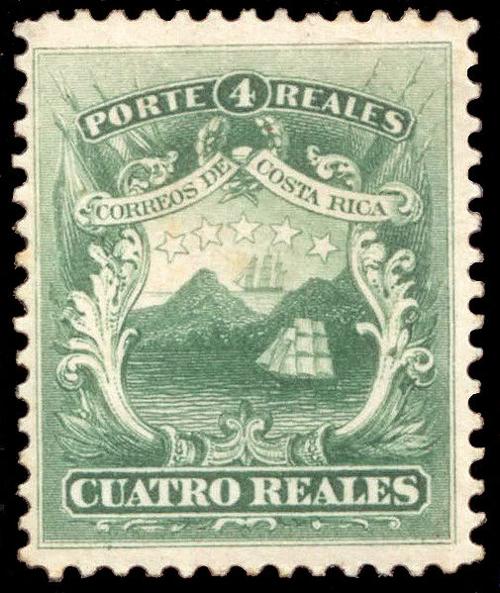 Costa Rica's first stamp from 1863Photo: Public domain
Costa Rica's first stamp from 1863Photo: Public domain
In 1821 Guatemala declared its independence and the transitional government in Costa Rica had two options: seeking affiliation with the Mexican kingdom of Iturbide or with the United States of Central America. The conservative and liberal members of the government were diametrically opposed and the difference of opinion even turned into a real civil war. On April 5, 1823, the struggle was decided in favor of the liberals, who preferred a federation. In retrospect, the entire war turned out not to have been necessary because the kingdom of Iturbide had already fallen.
On July 1, 1823, Costa Rica, Honduras, Guatemala, El Salvador and Nicaragua started as the United States of Central America. However, the federation was far from a success and Costa Rica tried to withdraw as early as 1824. But this process was not without a struggle either; In 1835 the cities of Heredia, Alajuela and Cartago signed an alliance (league) against San José and in September another brief civil war broke out, the so-called "La guerra de la Liga". This time San José emerged as the great victor and also became the new capital of Costa Rica. In 1838 Costa Rica permanently withdrew from the United States of Central America and declared its independence; president at the time was dictator Braulio Carrillo Colina. He fired the entire government, but Francisco Morazán, ex-president of the United States of Central America, managed to overthrow him and bring the country back into the federation. This did not last long, however, because in 1848 the federation fell apart and at the same time the República de Costa Rica was proclaimed.
Economically, Costa Rica was put on the world map in the rest of the nineteenth century by growing coffee and growing bananas. Due to increasing prosperity, the population grew rapidly and a new class was also created: the coffee aristocracy, which consisted of politically powerful coffee traders and plantation owners. Furthermore, many guest workers were needed to do all the work on the plantations.
The social relations between the large landowners and the small farmers intensified during this time and they were forced to search for unexplored areas in the north and south of the country.
In the mid-1800s, a civil war in neighboring Nicaragua threatened favorable developments in Costa Rica. Again, a battle raged between conservatives and liberals, which was won by the liberals with the help of the American freebooter William Walker. Walker did not waste any time and immediately proclaimed himself president and then tried to subdue all of Central America. The Costa Ricans opposed this, and under the leadership of President Juan Rafael Mora, Walker's men were finally defeated in April 1856.
In 1899, the American Minor Keith founded the United Fruit Company, currently a large multinational with a lot of political power in this part of the world.
Twentieth century
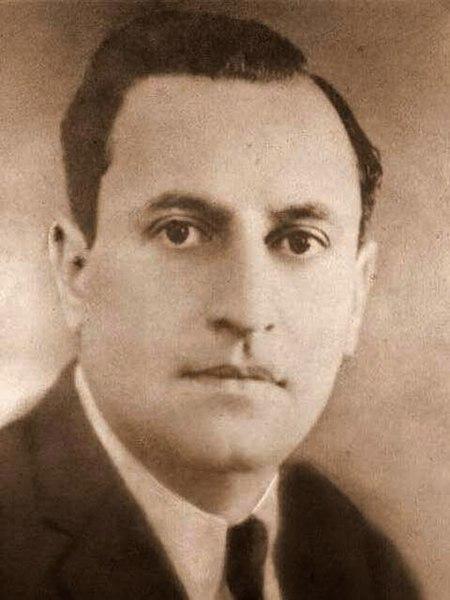 Angel Calderon, Costa RicaPhoto: Asamblea Legislativa CC 4.0 International no changes made
Angel Calderon, Costa RicaPhoto: Asamblea Legislativa CC 4.0 International no changes made
Internationally, Costa Rica had occasional border disputes with Nicaragua and Panama at the beginning of the 20th century (before 1903 Colombia). After Costa Rica had repeatedly recognized its rights by arbitral award in the dispute with Panama, it proceeded to occupy the disputed area in 1921. The dispute with Nicaragua was not settled by treaty until the year 1956.
Liberal politics at the beginning of the 20th century worked out well for the population. Education was improved, there was freedom of the press and the right to vote for men was broadened (women and minorities only received universal suffrage in 1948).
The separation of Church and State and the curtailment of the powerful landowners led to many coups and coups attempts.
The global economic crisis in the 1930s fueled popular discontent and forced President Angel Calderón of the Partido Republicano Nacional (PRN) to implement rigorous social reforms. Much has been achieved, particularly in terms of working conditions and land reforms. The opposition at that time consisted of the Partido Social Demócrata (PSD) and the conservative Partido Unión Nacional (PUN). In 1948 the elections were won by a joint candidate of both parties, Otilio Ulate. However, stories of ballot fraud immediately arose and that was a good reason for the ruling coalition of communists and socialists to declare the elections invalid and continue to rule.
This resulted in a civil war on March 10, 1948: La Guerra de Liberación. The insurgents' leader was José Figueres, president of the PSD. He managed to drive President Calderón away to Nicaragua.
Costa Rica continues without an army
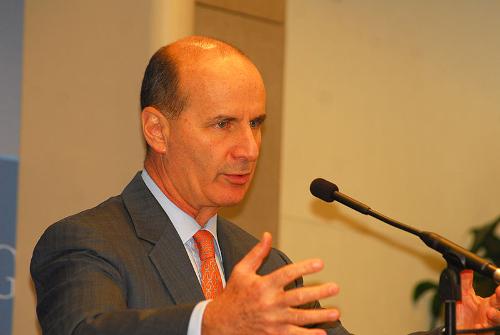 Figueras, Costa RicaPhoto: Larry Luxner CC 2.0 Generic no changes made
Figueras, Costa RicaPhoto: Larry Luxner CC 2.0 Generic no changes made
After the civil war, Figueres formed a provisional government of Social Democrats and Conservatives. However, disagreements quickly arose within the government about the reforms initiated, which threatened right-wing interests. Calderón watched this from Nicaragua with pleasure and waited for his chance. Figueres was aware of this and quickly reached an agreement with the conservatives in his government. The original reforms were implemented and, very importantly, the army was replaced by police units. Since that time there have been no more military coups in Costa Rica, unique for all of Latin America. Moreover, a new constitution was passed that once again arranged everything properly and formed the beginning of the Second Republic. Otilio Ulate took office as the first president on November 1, 1949.
In 1953 Calderón returned from exile and his PRN decided to partner with the PUN of Ulate. In the end, this even resulted in a new political party, the Partido Unidad Social Cristiana) PUSC. Figueres transformed his PSD into the Partido de Liberación Nacional (PLN).
The fifties and sixties of the last century brought economic prosperity to Costa Rica, as a result of which infrastructure, education, agriculture and industry and health care were also properly addressed. Costa Rica was particularly successful in the periods when Figueres was in power. In 1978 a center-right coalition led by R. Carazo was formed.
In the late 1970s, the Costa Rican economy collapsed, partly due to financial mismanagement. Government debt and inflation rates skyrocketed, and there was also a threat of involvement in the conflict between the Sandinistas and Contras in Nicaragua. After the coming to power of the Sandinista Liberation Front (FSLN) in Nicaragua in July 1979, relations between the two countries initially improved, but during the presidencies of LA Monge (1982-1986) and Oscar Arias Sanchez (1986-1990), both of the PLN, relations deteriorated with Nicaragua, which accused Costa Rica of supporting counter-calls operating out of Costa Rica.
Costa Rica finally declared itself a neutral, unarmed state with no army in 1983. The crowning glory of this neutrality policy was the role of President Oscar Arias Sanchez in the Nicaraguan conflict. His peace plan, Esquipulas II, was signed by five Central American presidents (those of El Salvador, Guatemala, Honduras, Nicaragua and Costa Rica) and he was awarded the Nobel Peace Prize in 1987 for this. However, the increasing dependence on financial aid from the United States put limits on Costa Rica's policy of neutrality.
In 1990 Christian Democrat Rafael Angel Calderón was elected president. Austerity-oriented economic policy led to demonstrations in 1992, after which a number of measures were withdrawn. An earthquake in April 1992 caused extensive damage, killing at least 90 people.
In May 1994, center-left José María Figueres came to power; he opposed the policies of the neoliberal Calderón. In March 1995, the presidential term and parliamentary term were extended from four to five years. Also in 1995, tensions with neighboring Nicaragua increased over the illegal presence of an estimated 300,000 Nicaraguans in northern Costa Rica.
The February 1998 presidential election was won by Miguel Angel Rodríguez of the opposition Partido Unidad Social Cristiana (PUSC). He defeated José Miguel Corrales of the PLN, who suffered from popular dissatisfaction with the economic policies of the outgoing President Figueres. The parliamentary elections were also won by the PUSC; 27 seats against 23 of the PLN.
21st century
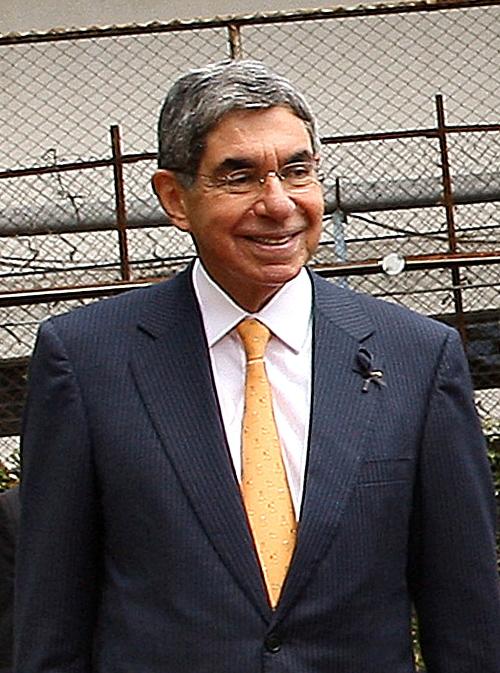 Arias, Costa RicaPhoto: Ricardo Stuckert/PR CC 3.0 Brazil no changes made
Arias, Costa RicaPhoto: Ricardo Stuckert/PR CC 3.0 Brazil no changes made
At the end of the 20th century, the economic situation in Costa Rica went in the right direction again, mainly due to the increasing tourism. Yet bureaucracy, corruption, inflation and high external debt largely determine the economic and political agenda. On the negative side, the president and the members of parliament can only be elected for one term, which means that there is almost no continuity and that the much-needed far-reaching reforms cannot or hardly be implemented. However, an amendment to the constitution in April 2003 has made it possible to do so, but there must be eight years between the two terms of office. All governments fear serious social tensions. As a result, the voter constantly switches from one party to the other (PUSC and PLN), hoping that it can deliver on its promises.
The president, Oscar Arias (PLN) does not have a majority in the parliament installed on May 1, 2006: of the 57 seats, the PLN has only 25 seats. The two largest opposition parties PAC and Movimiento Libertario have 17 and 6 seats respectively, while the PUSC of former President Abel Pacheco has been reduced to 5 seats.
Some criticism of President Arias' policy has already been heard. According to critics, for example, he would be more concerned with solving the problems abroad than with the problems at home in his own country. He does seem to be investing energetically in infrastructure, education and healthcare. In November 2008, Chinese President Hu Jintao will visit Costa Rica, after Costa Rica broke diplomatic relations with Taiwan in 2007. In March 2008, Arias re-establishes relations with Cuba.
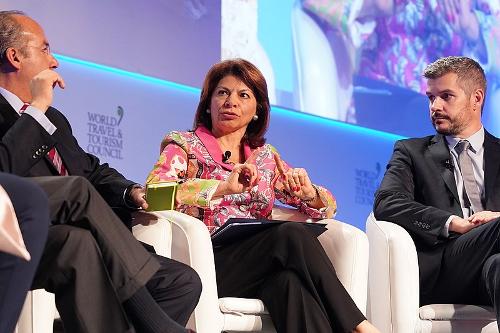 Laura Chinchilla, Costa RicaPhoto: World Travel & Tourism Council CC 2.0 no changes made
Laura Chinchilla, Costa RicaPhoto: World Travel & Tourism Council CC 2.0 no changes made
In February 2010, Costa Rica received a female head of state for the first time in history. 50-year-old socially conservative political scientist Laura Chinchilla of the National Liberation Party, ally and successor of President Oscar Arías, received almost 47% of the vote. The appointment will be confirmed in May 2010. The United Nations is ordering Nicaragua and Costa Rica to withdraw their troops from the border areas. Luis Guillermo Solis becomes the new president in April 2014. In December 2015, Costa Rica wins a protracted territorial dispute with Nicaragua over a patch of land near the San Juan River. Center-left candidate Carlos Alvarado won the March 2018 presidential election by a surprisingly large margin over his evangelical pastor rival Fabricio Alvarado.
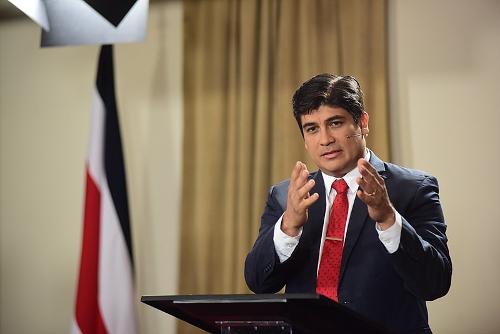 Carlos Alvarado Costa RicaPhoto: MadriCR CC 4.0 International no changes made
Carlos Alvarado Costa RicaPhoto: MadriCR CC 4.0 International no changes made
Sources
Daling, T. / Costa Rica : mensen, politiek, economie, cultuur
Koninklijk Instituut voor de Tropen/Novib
Luft, A. / Reishandboek Costa Rica
Elmar
Mays, B. / Costa Rica
Kosmos-Z&K Uitgevers
Müller, B. / Costa Rica
Van Reemst
O´Bryan, L. / Costa Rica
Gottmer/Becht
Te gast in Costa Rica
Informatie Verre Reizen
CIA - World Factbook
BBC - Country Profiles
Copyright: Team The World of Info